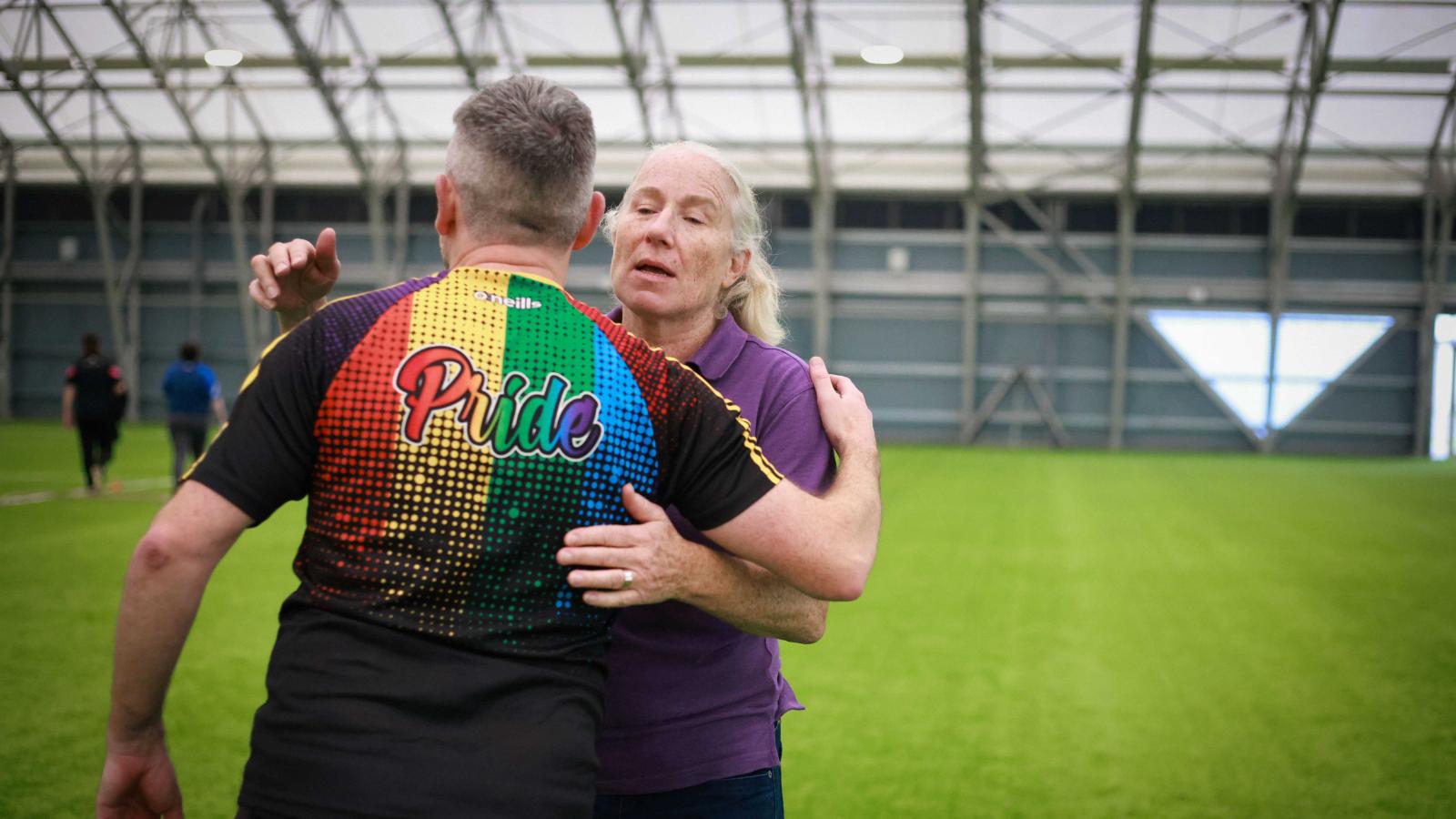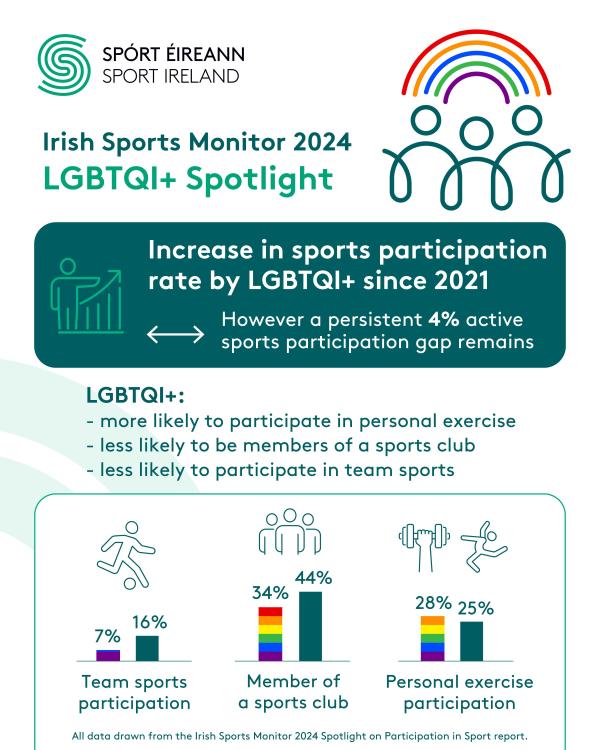
Sports participation by members of LGBTQI+ communities continues to increase
Sport Ireland has published its Spotlight on Participation in Sport report, which shows sports participation by LGBTQI+ members of the community has continued to climb.
While the participation numbers are trending upwards, there remains a small sports participation gap versus the heterosexual community. However, there is a significant social participation gap of 16% between LGBTQI+ (38%) and heterosexual communities (54%). Social participation is defined as activities such as club membership, volunteering, and attending sporting events.
Despite a 9% increase in sports participation rate by LGBTQI+ since 2021 there is a consistent active sports participation gap of 4% (LGBTQI+ 58%, Heterosexual 62%).
The most popular sports among LGBTQI+ individuals are personal exercise (28%, 3 percentage points greater than heterosexual respondents), dancing (9%, 6 percentage points greater) and swimming (8%, 1 percentage point smaller).
The survey, carried out by Ipsos B&A, reveals that sport participation rate gaps between LGBTQI+ and heterosexual individuals are greatest in dancing (as outlined above), running (7%, four percentage points smaller than heterosexual respondents), soccer (3%, 4 percentage points smaller) and Gaelic football (1%, four percentage points smaller). Meanwhile, 55% of both groups (aged under 45) play an individual sport.
Mary van Lieshout, Sport Ireland Director of Participation Ethics Integrity and Research, said: “This research shows that while progress has been made, work remains to be done, especially in the area of social participation.
“We have published a guidance document for the inclusion of transgender and non-binary people in Irish sports. In addition, Sport Ireland's Diversity and Inclusion Policy sets a vision for a sport sector that is diverse and inclusive.”
Sport Ireland has partnered with Sporting Pride and Local Sports Partnerships in Clare, Kilkenny, and Carlow to pilot a sport-specific LGBTQI+ Advocacy Training Programme for sport clubs and organisations. A nationwide rollout is planned next year.
Sport Ireland also supports LGBTQI+ sporting programmes and initiatives through the Dormant Account Funding’s Equality, Diversity, and Inclusion Fund. These types of programmes vary from Irish Sailing’s Get Out Sailing to the IRFU’s Pride Tag Festivals.
Sport Ireland also works to support the LGBTQI+ community in sport through initiatives like the ‘Let's Get Visible!’ campaign with Sporting Pride, a volunteer-run LGBTQI+ community organisation which promotes visibility and representation in sport.
This Spotlight report represents a deep dive into research in the Irish Sports Monitor 2024 report, which shows active participation in sport reached a new high in 2024, with 49% of the adult population actively participating regularly.
This represents a significant 6% increase since 2022 and surpasses the pre-pandemic peak of 46% in 2019. This rate equates to approximately 2.1 million people participating in sport on a regular basis – an increase of roughly 330,000 people over five years.
Benny Cullen, Director of Research and Innovation at Sport Ireland, said: “Now is the time to build on this record-high interest in sport. With more people active than ever, we must focus on keeping them involved long-term. This means establishing sustainable participation pathways, helping casual participants move to regular, structured and time efficient sport participation habits that they can build into their weekly routines.”
The most popular activities remain personal exercise (18%) as well as swimming (8%), running (7%) and cycling (5%), with their rank order remaining consistent with previous years. The most popular locations for participation are at a gym/sports centre (30%), home (15%) or at a sports club (14%). Most people exercise on their own (46%).
The average time spent participating in sport increased to 4.1 hours per week, with a notable 5% rise since 2022 to 25% in those playing for more than five hours.
However, this increase is driven almost entirely by men with the time spent by women almost unchanged over this period. A persistent gender gap of 3% can be seen, with 50% of men and 47% of women participating.
Analysis of seasonality reveals that overall participation peaks in the summer months driven by more casual participation in public places.
The country’s growing youth population - the most active demographic - is driving a surge in sports participation. With engagement rates climbing steadily, the country is now within reach of the National Sports Policy’s ambitious 50% target by 2027. The ISM 2024 survey, which was published in April, found that half a million people, 12% of adults, volunteer in sport weekly.
